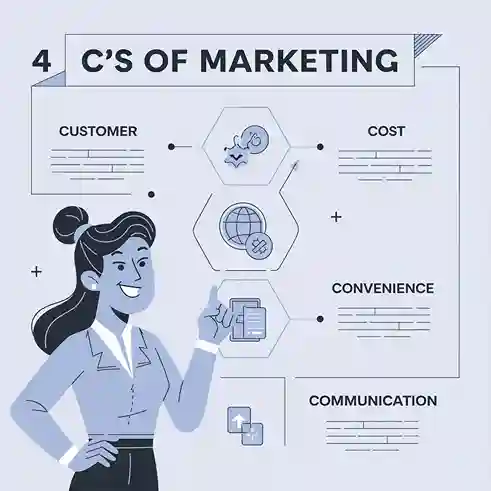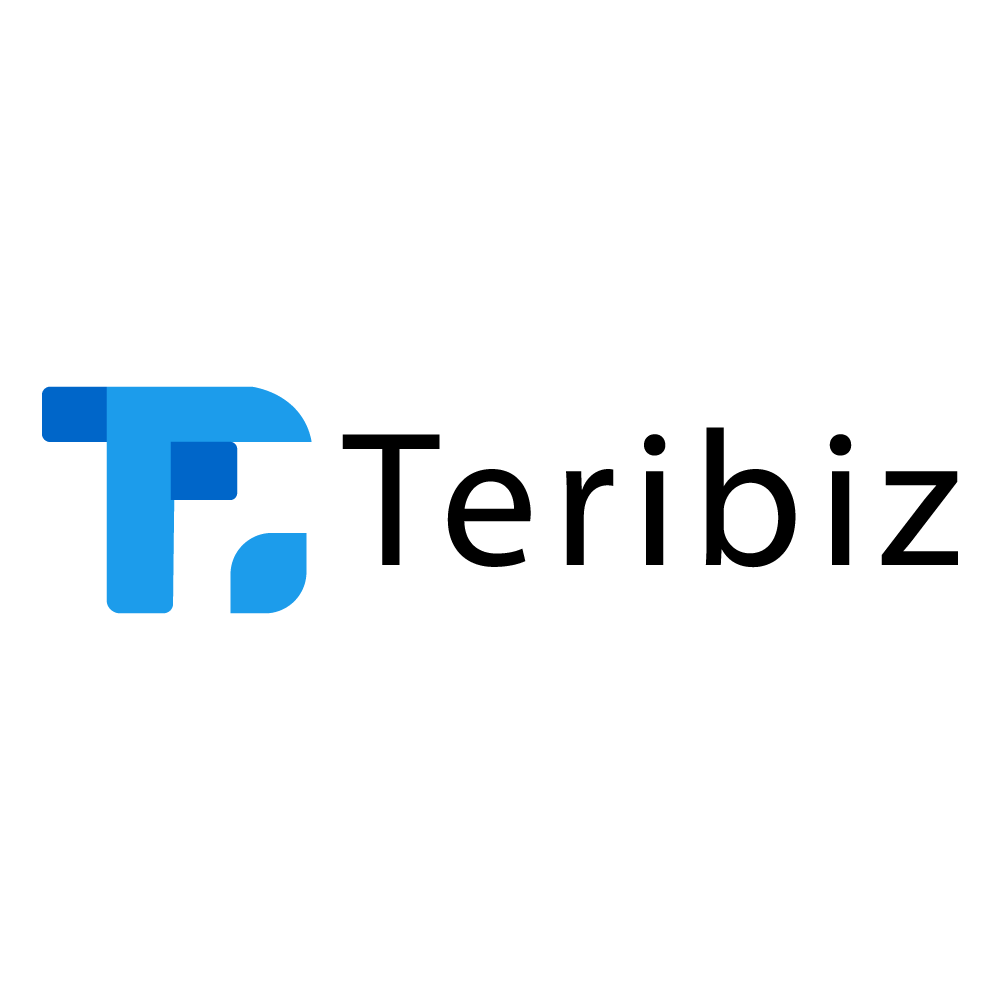
Marketing is at the heart of any successful business strategy. In a constantly changing world where consumer preferences are more personalized and dynamic, traditional marketing models have evolved. One of the most significant advancements in marketing theory is the introduction of the 4 C’s of marketing, a customer-focused framework designed to align businesses with the ever-evolving needs and wants of their audience.
Unlike the more conventional 4 P’s of marketing, which focus on Product, Price, Place, and Promotion, the 4 C’s shift the perspective from the product and seller to the customer. This customer-centric approach not only emphasizes creating value for consumers but also highlights the importance of communication, convenience, and cost from the buyer’s perspective. This blog post provides an in-depth examination of the 4 C’s of marketing, their functionality, advantages, and practical methods for integrating them into your marketing plan to achieve the greatest possible effect.
What Are the 4 C’s of Marketing?
Marketing’s foundational framework is built upon four key principles known as the 4 C’s: Consumer, Cost, Communication, and Convenience. This comprehensive strategy prioritizes creating a customer-centric approach that addresses the multifaceted requirements and expectations of the target audience through a integrated and thoughtful methodology.
Let’s break them down:
Consumer (Customer)
The first and foremost element of the 4 C’s is Consumer. In the modern marketing landscape, businesses must start with the customer’s needs and desires. The goal is not merely to push products but to create solutions that resonate with the consumer. Every aspect of your marketing strategy should be driven by an understanding of your target market, their pain points, their desires, and how your product or service can improve their lives.
When thinking about the Consumer, ask yourself questions like:
- Who are your ideal customers?
- What do they need, and how do they prefer to interact with your brand?
- What problem does your product solve for them?
By putting the consumer at the heart of your marketing strategy, you ensure that you are designing and delivering products that people actually want.
Cost
Next in the 4 C’s framework is Cost. But here’s the twist: Cost doesn’t just refer to the price of a product. It takes a broader view by considering the total cost of ownership from the customer’s perspective. This includes not only the purchase price but also the costs associated with using, maintaining, and even switching to a new product.
For example, think about how customers perceive value:
- What will it cost them in time or effort to use your product?
- Are there additional costs, such as subscriptions, accessories, or maintenance fees?
- How does your product’s cost compare to other solutions in the market?
The Cost component encourages businesses to think beyond the price tag and focus on delivering value that justifies the customer’s investment.
Communication
In today’s digital age, Communication is key. It’s no longer enough to broadcast a marketing message and hope it resonates with your audience. Modern marketing is about building a two-way dialogue with your customers. This means actively listening to your audience, addressing their concerns, and fostering a relationship that goes beyond one-off transactions.
Effective communication includes:
- Traditional advertising like TV and print ads
- Online platforms including social media networks, email communication channels, and web-based blog platforms
- Customer feedback loops, where businesses listen to their audience and adapt based on the input they receive
The Communication aspect of the 4 C’s emphasizes engagement. It’s not just about talking at your customers but creating a meaningful exchange where they feel heard, understood, and valued.
Convenience
Finally, the Convenience factor addresses how easy it is for a consumer to purchase and use a product. In an era of on-demand services and fast online shopping, convenience is more important than ever. Businesses must make the process of purchasing and using their product as seamless as possible.
Key factors that influence Convenience include:
- Product availability (both online and in-store)
- Streamlined checkout processes (e.g., one-click buying)
- Easy-to-use websites and mobile apps
- Delivery and return policies that put the customer first
Developing an intuitive and effortless purchasing journey substantially enhances the probability that consumers will prefer your brand compared to competitors who fail to recognize the critical role of accessibility and ease of use. The impact of convenience on customer loyalty is profound and transformative.
How the 4 C’s Impact Your Marketing Strategy
Now that we’ve explored the individual elements of the 4 C’s, it’s time to understand how these principles work together in practice. Successfully implementing the 4 C’s framework requires crafting a marketing approach that strategically integrates each component with your organization’s broader strategic objectives.
Focusing on the Customer Journey
The consumer journey is complex, and each step of that journey requires a careful mix of the 4 C’s to ensure a successful outcome. By understanding your customer’s preferences and challenges at every touchpoint, you can tailor your marketing efforts to meet their needs, improve their experience, and guide them towards a purchase.
Example:
- If you’re selling a fitness app, you must understand the goals of your target customers (Consumer), ensure the subscription costs align with their budget (Cost), engage them through helpful content and customer support (Communication), and offer easy access across multiple platforms (Convenience).
Creating a Seamless Experience
The 4 C’s work best when they complement each other. The idea is to deliver an integrated experience that speaks to each aspect of the customer’s expectations. By focusing on the customer’s needs, the price they’re willing to pay, the convenience of obtaining your product, and how effectively you communicate, you can create a seamless journey that enhances satisfaction and builds loyalty.
For instance, if you communicate clearly with your customers about your product’s features and benefits, but the purchasing process is convoluted and inconvenient, all your communication efforts could fall flat.
Benefits of the 4 C’s Model
The 4 C’s approach offers numerous advantages for marketers, especially in today’s competitive environment. Here are some of the key benefits of adopting the 4 C’s model:
- Customer-Centric Focus: The 4 C’s ensure that everything you do revolves around meeting your customer’s needs and delivering true value. By continuously focusing on the customer, you build stronger relationships and create products that solve real problems.
- Increased Engagement: Communication is central to the 4 C’s. By fostering a two-way conversation, you engage your audience more effectively. This leads to better feedback, improved products, and ultimately, higher customer retention.
- Higher Conversion Rates: A more convenient, cost-effective, and well-communicated product or service will naturally result in higher conversion rates. Customers are more likely to convert if they feel your brand makes their lives easier and offers value that aligns with their needs.
- Stronger Brand Loyalty: When you prioritize the customer’s experience in every interaction, you enhance customer satisfaction and loyalty. Loyal customers not only return for repeat business but also become your brand advocates.
Implementing the 4 C’s in Your Marketing Strategy
To implement the 4 C’s of marketing into your business strategy, here are some actionable tips:
Understand Your Consumer
Perform comprehensive market analysis to uncover the challenges, motivations, and patterns of your potential customers. Leverage research methods such as surveys, digital platform monitoring, and collecting direct customer input to extract meaningful and actionable intelligence about your target audience. Develop detailed customer profiles to enhance your understanding of various customer segments.
Price with the Customer in Mind
Evaluate the overall cost from the customer’s perspective. This includes not only the price but also the cost of time, convenience, and ongoing maintenance. Ensure your pricing strategy reflects the value you’re offering while remaining competitive.
Communicate Effectively
Instead of delivering one-way messaging, focus on fostering meaningful dialogue. Utilize tailored communication platforms like email, automated messaging systems, and social media to proactively respond to inquiries and address potential concerns. Prioritize generating content that provides genuine value and stimulates meaningful customer engagement.
Make it Convenient
Streamline the purchasing process by optimizing your website for ease of use, offering multiple payment options, and ensuring your products are readily available through the right channels. Provide exceptional customer service to make every interaction smooth and hassle-free.
Conclusion
The 4 C’s of Marketing—Consumer, Cost, Communication, and Convenience—represent a shift in marketing strategies from a product-centric to a customer-centric approach. By adopting the 4 C’s framework, businesses can create more personalized experiences, build stronger customer relationships, and ultimately drive higher sales and brand loyalty.
In today’s competitive marketplace, consumers demand more than mere transactional exchanges—they seek holistic experiences that align with their individual requirements, core values, and aspirational goals. By embracing the 4 C’s framework, businesses can differentiate themselves, maintain a competitive edge, and establish more profound connections with their target demographic.
Regardless of your business scale or marketing expertise, the critical imperative is to refocus your strategic approach with the customer as the central priority. The evolving marketing landscape is fundamentally about generating meaningful value, establishing authentic and effective communication channels, and systematically reducing barriers to customer interaction and brand engagement.
